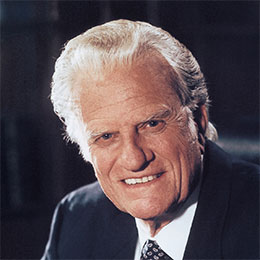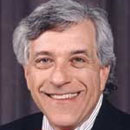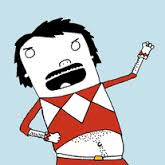Why are these people waiting two hours for lutefisk?
Published in Lifestyles
MINNEAPOLIS -- For a certain cohort of Minnesotans, Christmas isn’t Christmas without Swedish meatballs, Swedish sausage, herring, lutefisk and lefse. And in Minneapolis, the place to shop for these things is Ingebretsen’s, an East Lake Street stronghold of Scandinavian culture since 1921.
As Dec. 25 approaches, the queue for the meat market starts to stretch down the block. And customers spend hours standing out in the cold to buy fixings for their holiday feasts. For some, a trip to Ingebretsen’s is a multigenerational pre-Christmas ritual akin to hitting up Holidazzle or the old Dayton’s eighth-floor displays. According to lore, a customer once fainted in line, and after first responders arrived, she refused to leave until her number was called.
The communal wait has become as much a part of the shopping tradition as whatever items are purchased, explained co-owner Julie Ingebretsen, granddaughter of Norwegian immigrant founder Charles Ingebretsen Sr. “It’s not just getting the food — it’s becoming part of the spectacle of it.”
Among the line’s regulars are a group of ladies known to dress in big hats. And several brothers who always arrive at the crack of dawn on the Monday before Christmas, so they can be first into the store. Ingebretsen’s staff will bring out the thermal pot and pour coffee for the crowd. A few years ago, a musically inclined line-waiter directed the queue in spontaneous singing of Christmas carols. “People really make the most of it,” said Julie Ingebretsen’s daughter and co-worker, Anna Bloomstrand.
After the 2016 election, Bloomstrand started making “I waited” stickers for shoppers who endured the line. She updates the stickers’ date each year, and some customers collect them, like annual tree ornaments.
From herring to gjetost
Ingebretsen’s may be the only place in town where the sweet scent of cardamom candles comingles with whiffs of smoked fish, as its two separate businesses — the gift and butcher shops — are housed under the same roof.
The company began as a meat market, which Julie’s father, Charles Jr. (Bud), took over after World War II. He brought on a partner, Warren Dahl, whose descendants continue to run the food side of the business. The Ingebretsen family manages the gift shop, which Julie launched in 1974 by importing Nordic kitchenware, textiles and other home goods.
Ingebretsen’s meat market remains in an era past, with its wood-paneled aesthetic and cash-or-check payment policy. (They recently added an ATM but still don’t take preorders.)
During the two weeks leading up to Christmas, butcher Lenae Dahl sells a ton of Swedish sausage and Swedish meatball mix — literally 1,000 pounds of each per day. She says customers stay cheerful despite tired feet. “They’re always smiling and always happy even though they’ve been waiting.”
Ingebretsen’s sells stuff you’d be hard-pressed to find at any modern supermarket, including tinned fish balls, house-made lamb roll, cured mutton ribs and frozen blood, used by DIY sausage-makers. If you’ve never worked up the nerve to try head cheese, this is the place to do it. (A newbie recently declared it “quite good.” Dahl explained how the beef-and-pork mixture is now fused with gelatin, instead of its namesake collagen from animals’ heads.)
Along with meats, the market carries imported cheeses, including the famously un-cheese-like Norwegian gjetost, which looks like peanut butter and tastes like butterscotch. There’s also every possible preparation of herring — smoked, salted, pickled or doused in cream sauce — plus lingonberry jam and caviar packaged in toothpaste-style tubes.
The butchers, some of whom come out of retirement to work the holiday rush, ring up customers’ tabs on an old-school adding machine. In a rare nod to modernity, the market offers microwaving instructions for preparing its lye-soaked cod that dates to the Vikings.
After 25 years of shopping at Ingebretsen’s, Sue Anderson of Northfield has learned to come a couple weeks before Christmas, on a weekday, to buy ingredients for her family’s holiday meal. On a recent visit, she said her children look forward to the spread of Swedish meatball mix and sausage, lefse, and herring in tomato sauce that she associates with her father, who was born in Sweden, and her husband’s Norwegian ancestors. “It keeps that heritage going.”
Mark Miller loaded up on ham loaf, krumkake and rosettes, but said he planned to skip the pig knuckles that his grandfather used to wait hours in line to acquire. (“I tried them once. There’s no way I’m getting close to them.”) His wife, Janet Miller, is a relative newcomer to the Ingebretsen’s pilgrimage, but said she enjoys the custom she adopted through marriage. “If you want authentic, you come here — it’s worth the trip.”
Needlework and gnomes
Ingebretsen’s gift shop has a sleeker aesthetic that matches the building’s newer black-and-gold storefront signage.
Though the shop does a robust mail-order business, it’s more fun to see the wares in person: Scandinavian glassware and lefse-making kits; artisan jewelry, Marimekko fabrics, and hand-painted Sven clogs; tomes by Nordic authors shelved alongside the obligatory Ole and Lena joke book. Among the abundant Christmas décor, gnomes (nisse in Norwegian, and tomte in Swedish) are bestsellers.
There’s a separate needlework room with skeins of yarn, knit sweaters, kids’ clothing and toys. Ingebretsen’s even hosts classes for making Nordic crafts, including hand-stitched wool singlade balls, needle-felted gnomes and Moravian paper stars.
Neighborhood stalwart
Ingebretsen says the past few years have been among the most difficult in the store’s history. In 2020, during COVID lockdowns, the shop was damaged during the civil unrest that followed George Floyd’s murder. Vandals smashed windows and threw paint. Thieves stole computers, blankets and coats.
Although Ingebretsen’s could find newer digs with abundant parking in the suburbs, its owners have stuck with the city. Ingebretsen says she loves being “the old folks on the block” and seeing how, over the decades, businesses run by European newcomers have been replaced by those from Mexico or Somalia. “The whole immigrant thing fascinates and inspires me,” she said. “That’s what Lake Street’s about.”
Ingebretsen says customers frequently tell her they’re happy the store has stayed in the neighborhood, even as some are surprised by its location. “One question we get a lot is: Why the heck are you here, on this corner, in this neighborhood?” Ingebretsen said. “Obviously, we’ve been here forever. We kind of forgot to leave.”
She notes that for many families who grew up in the area, and have long since scattered, Ingebretsen’s is a comforting harbor they return to, year after year. They might bump into friends they haven’t seen since their last holiday shopping trip. And perhaps speak a little Swedish or Norwegian together.
©2024 The Minnesota Star Tribune. Visit at startribune.com. Distributed by Tribune Content Agency, LLC.





























Comments